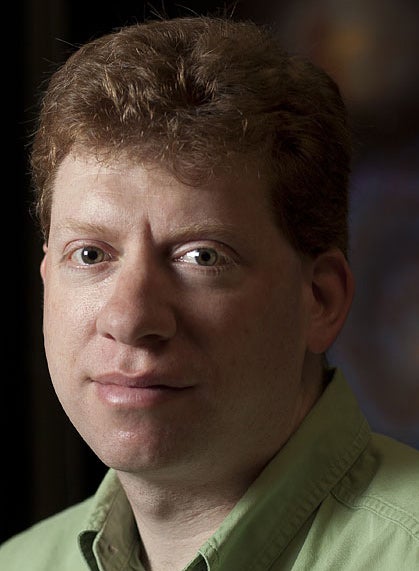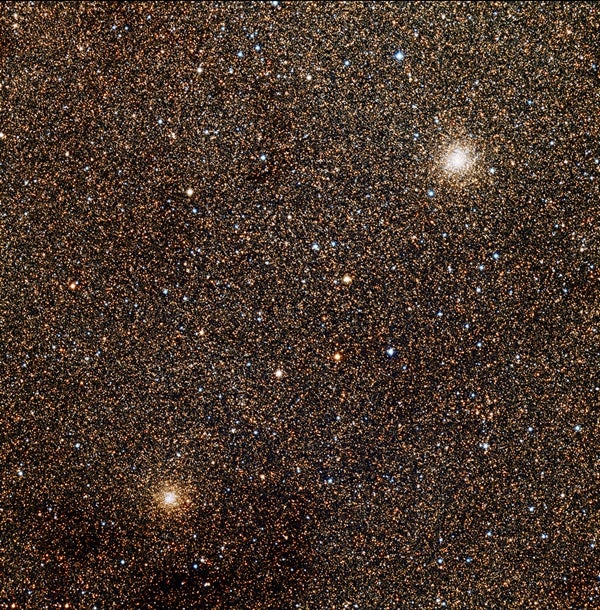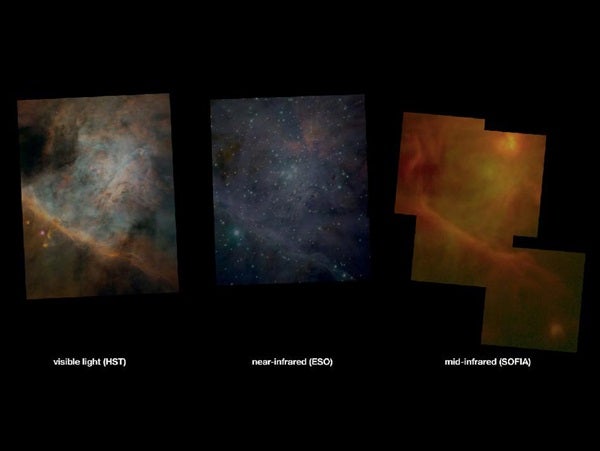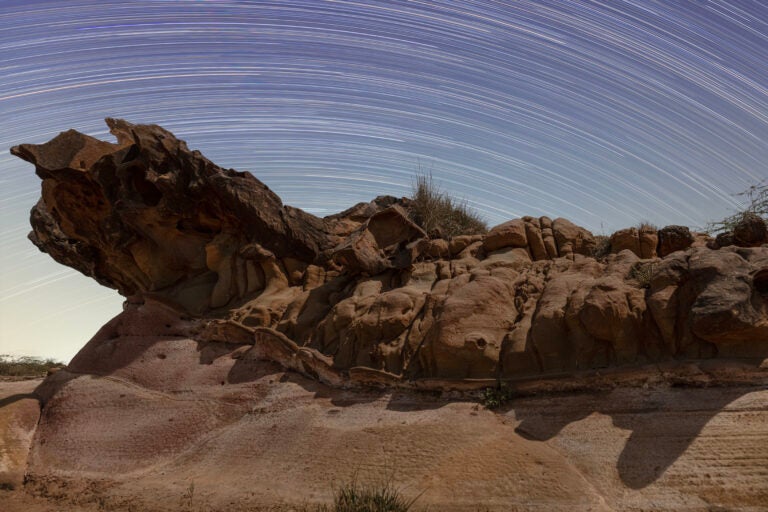Globular clusters NGC 6522 and NGC 6528 (left image) float amid the seemingly uncountable stars toward the center of our galaxy. Here, we look through Baade’s Window and see more stars than normal because of a break in the dust clouds that pervade the area. In addition, two globular clusters, each representing a hyperbole of a stellar swarm, scream that stars and their sheer number are part of the story here.
What did Johannes Kepler, Heinrich Olbers, and even Edgar Allan Poe see in their mind’s eye when they considered an infinite universe of stars while trying to reckon with the darkness of the night sky? This stellar field could represent something close. And I wanted the picture to communicate the story of Olbers’ paradox, which asks why, if the universe is infinite, we don’t see stars covering the sky.
I also brightened the image aggressively. Normally, stars cause visual confusion (see June 2015’s column about getting the maximum out of the minimum filter), but in this case we want the stars emphasized. Finally, when applying the mask for noise reduction, I was careful that “Smoothing” only act on the darkest pixels so the faintest stars didn’t dim.
My second example is the Orion Nebula (M42), which, even for all of its fame, holds untold stories. The stellar winds of embedded stars blow bubbles within the clouds of gas. I wished to communicate the motion of the gases in the nebula, so, compared to the above example, I needed to take a gentler approach.
In these examples, my background in astronomy helped me find inspiration to highlight elements in the images. I encourage you to find compelling attributes to your own astrophotographic subjects. It may be that a single feature in the image is the starting point, or it could be that the subject embodies a more conceptual theme. With this in mind, the road to processing your images will be more direct because you will have a clear destination.
In my next column, I will show how to create field-of-view indicators without specialized commercial software.












